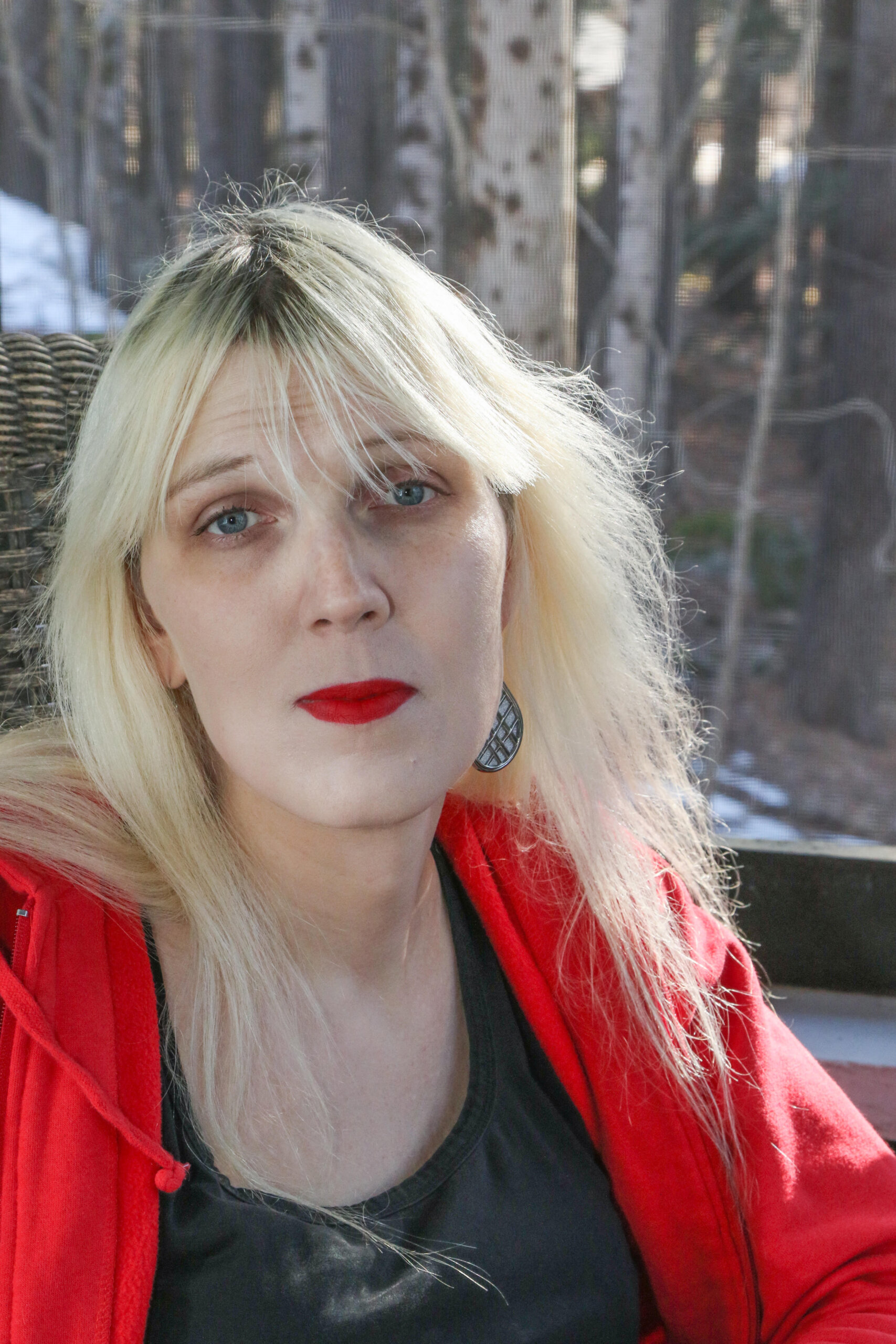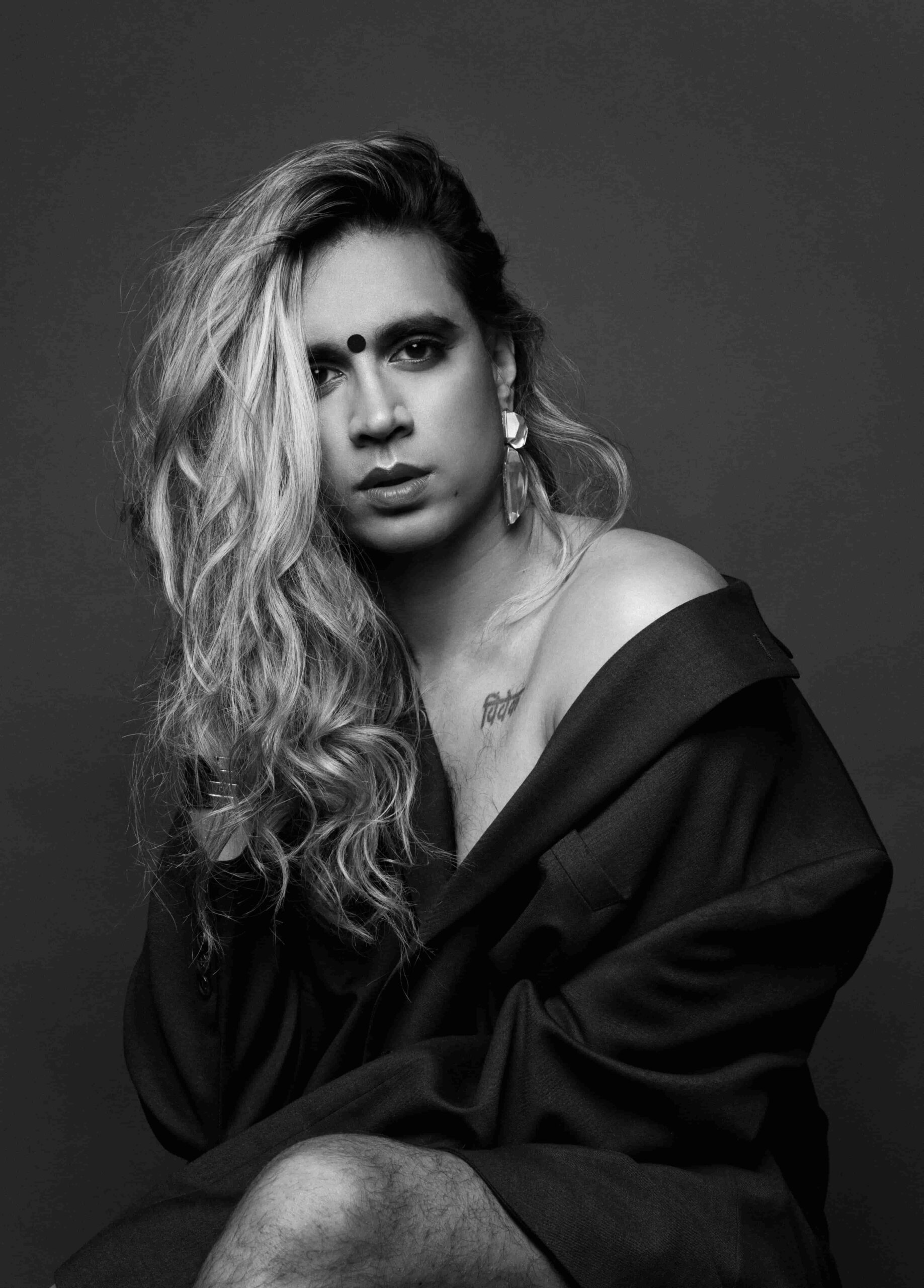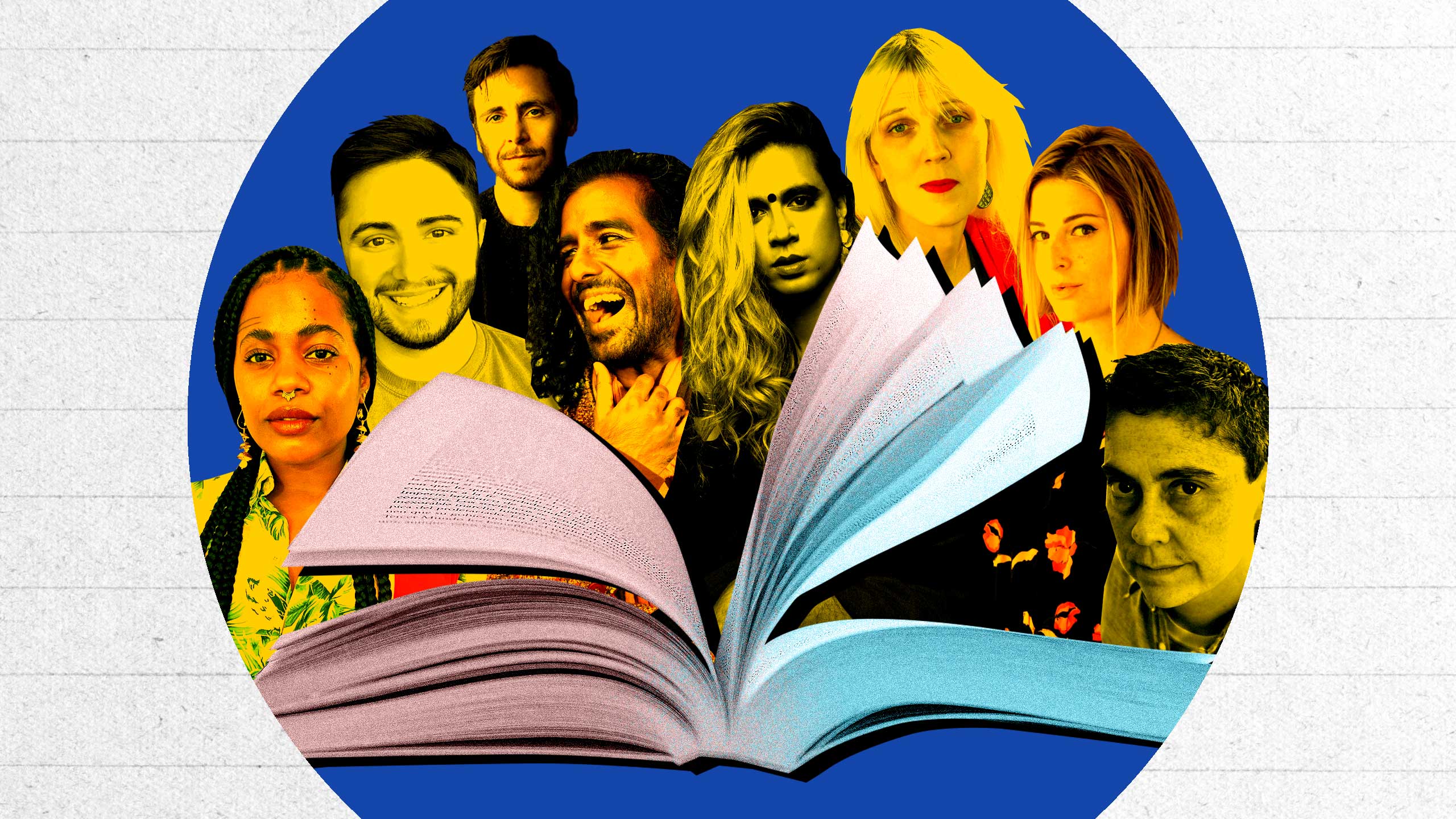In 2018, the New York Times hailed the literary success of authors Andrea Lawlor, Jordy Rosenberg and Akwaeke Emezi, among others, as “the coming of age of transgender literature.” Two years later, Aiden Thomas became the first trans novelist to hit the NYT bestseller list, while Torrey Peters declared the onset of a “trans literary renaissance” just four months before her debut Detransition, Baby made her the first trans woman longlisted for the Women’s Prize for Fiction. Whether it’s the commercial success of Peters and Thomas or the critical acclaim achieved by small-press authors like Jackie Ess and Shola von Reinhold, some trans authors are finally receiving the attention their work merits.
But despite this progress, self-congratulatory coverage of relatively successful trans books can mask the fact that much remains the same. Most trans writers still can’t get published, most trans writers who get published don’t get paid much, and cis writers continue to reap rewards for writing transphobic books.
“I really hope we can move on from being surprised that trans literature is a thing.”

Credit: Joanna Eldredge Morrissey
It can be frustrating to see journalists celebrate singular trans writers for their books’ ability to educate cis people, rather than thinking of their work as art independent of cis approval. When books by trans people get reviewed, we hear a lot about their “originality,” “importance” and “bravery,” and far less about their influences and craft. Such uninspired reflections can mean that trans authors’ connections to the literary world around them remain tenuous and provisional; they’re an imported curiosity, rather than a necessary part. When we’re missing from the discussion, nobody notices. Nobody asks who might be keeping us out, or why. Nobody asks why the same rich histories and cultures that inform our books suddenly don’t exist when it’s time to paint trans people as a cultural menace.
“I really hope we can move on from being surprised that trans literature is a thing,” Canadian author Casey Plett tells me. “I would love to move past that… and instead see more nuanced, complicated, real criticism.” So, what might that real criticism look like? What would it be like to talk about trans lit in its history and context, rather than just applauding politely at its existence?
Transness is a bright thread in the tapestry of literary history, going back to even the earliest written records of civilisation. The first named writer on record, a Sumerian priestess living 4,200 years before the invention of synthetic estrogen, wrote in her poem “Passionate Inanna” that “to turn a man into a woman and a woman into a man are yours, Inanna.” Ancient and medieval texts abound with gender-switchers and shape-shifters, from Ovid to the Mabinogion to medieval French romance, while Shakespearean comedies like As You Like It and Twelfth Night rely on boys dressed as girls dressed as boys. This frisson of genderfuckery doesn’t map onto “trans” as a firm identity, of course, but it’s clear that human beings have been mesmerized by the idea of crossing and blurring gender lines since we learned written language. Wherever that pull is present, so are we.
Explicit and legible transness, as we understand it today, is obviously harder to find in literature the further back you go, especially since we’re often having to read past assumptions that gender transgression is a moral stain. (Cassius Dio wrote about the Roman emperor Elagabalus wishing to be castrated and to have a surgically constructed vagina, for instance, but we have to take into account that this was intended to be defamatory.) But there are flickers of a disappeared history in certain texts, often created by the rare queer people who had independent wealth. Writer and performer Harry Josephine Giles keeps an ever-growing list of trans novels throughout history: it currently goes back to the 1880s, where early texts include Irene Clyde’s 1909 feminist utopian novel Beatrice the Sixteenth and Radclyffe Hall’s The Well of Loneliness, which was the subject of a 1928 obscenity trial as well as countless friendly debates about whether its protagonist is a butch lesbian, a trans man or another identity entirely. Considering the historical ways queer and gender expansive people were treated, there are likely many more gender-transgressing texts that were burned or lost in the annals.
Advances in medicine and the gay rights movement slowly led to various trans writers publishing iconic texts, most famously Leslie Feinberg’s Stone Butch Blues (1993), whose protagonist inhabits a complex lesbian identity that straddles butchness and manhood. Kate Bornstein’s memoir, Gender Outlaw: On Men, Women, and the Rest of Us (1994), along with their performance pieces explored transfemininity beyond the banal “woman trapped in a man’s body” narrative, while Red Jordan Arobateau celebrated queer Black sex and butch life in books like The Bars Across Heaven (1976) and Lucy and Mickey (1996). The vast majority of trans writing we have access to, however, is from after the advent of the internet, where consciousness of transness could spread more easily, self-publishing became a little more accessible and writing became easier to preserve and find.
“How do you tell your own authentic, messy story if the language you were taught was seeded with poison?”
Various genres have been pivotal in the development of trans literature, especially memoir. From Lili Elbe’s Man into Woman (published in English in 1933) and Christine Jorgensen’s A Personal Autobiography (1967) to Janet Mock’s Redefining Realness (2014), trans memoir has had a powerful role in allowing trans people to articulate their own stories and communicate with other trans people. Trans people’s relationship to memoir is fraught, however. While memoir has provided a counterpoint to inaccurate and hostile narratives about transness—such as the idea that transness is driven by a sexual fetish, or that trans people can’t live happy lives—they’ve also reproduced harmful or restrictive stories about transness, as well. How do you tell your own authentic, messy story if the language you were taught was seeded with poison?
One way trans authors handle this dilemma is changing the emphasis from a linear, medicalized story of personal transition to memoirs that emphasize interconnectedness, attack the assumptions behind gender and transition and don’t corral their experiences into a single, complete narrative. Favourites of mine include Thomas Page McBee’s Amateur, an interrogation of masculinity through the lens of boxing, and T. Fleischmann’s Time is the Thing a Body Moves Through, which intersperses meditations on gender with essayistic reflections on ice and the works of gay Cuban-American visual artist Félix González-Torres. Neither McBee nor Fleischmann supplicate to the reader or try to justify themselves and their transness. They just write about what interests and troubles them, and philosophies of gender are legible in those discussions.
Other trans writers, like Sybil Lamb in I’ve Got a Time Bomb (2014) and Kai Cheng Thom in Fierce Femmes and Notorious Liars (2016), fold aspects of memoir into their novels, adding fantastical elements. Or, if their self-conceptions are incommensurate with Western conceptions of transness—like Emezi in their 2018 novel Freshwater—they tell their stories in ways that provide a different ontology entirely to that of gender transition. Blending memoir and fiction helps temper the personal exposure that can be dangerous for trans writers, but it also provides space for real experiences that are best expressed in territory we deem fictional. Lamb’s punky picaresque novel I’ve Got a Time Bomb conveys the disorienting experience of head trauma, while Isabel Waidner’s cutting depiction of post-Brexit precarity, We Are Made of Diamond Stuff (2019), also features fantastical shape-shifting leopards (which are no more insane than the Kafkaesque bureaucracy its characters must navigate).
Trans novels are also in conversation with genres like erotica, which has a strong and problematic history in trans writing. “Erotic writing is totally central to the history of trans literature,” Harry Josephine Giles argues. “You cannot escape it and you shouldn’t want to.”
“Trans writers are active historians working with a piecemeal history, filling its gaps and trying to shape existing forms in ways that make room for their own existence.”
But all the same, much of that erotica involves now-outdated, uncomfortable perceptions of gender, and intersects with the ways in which trans people are pathologized for their sexuality. Trans novels, then, might interrogate that erotic history in a variety of ways: Shola von Reinhold’s LOTE (2020) is a novel about opulence that doesn’t depict sex or feasts, which suggests the fraught relationship its Black trans subjects have to bodily exposure, while books like Imogen Binnie’s Nevada (2013) and Torrey Peters’ The Masker (2016) explore bad, abject sex, sex through which people are taught how to perform some genders and drown others.
Trans writers are active historians working with a piecemeal history, filling its gaps and trying to shape existing forms in ways that make room for their own existence. Take, for instance, jia qing wilson-yang’s Small Beauty (2016) and Plett’s Little Fish (2018). Both novels follow grief-stricken trans women who try to trace a buried line of queerness through their families. They ask family members about deceased queer relatives and get confused, incomplete answers: cis people are bad archivists of trans history, after all. These fractured family histories are a site of strain, but reconstructing them is also a source of joy. When all the sources are flawed, what we imagine is worth as much as what we’re told.

Credit: Val Bah
But as poet Kama La Mackerel says, writing can foster a future for other trans people. “Our ancestors have dreamt of a different world for us, and it is that world that allows me to be the person I am now.”
There’s no one way to talk about trans novels, but it’s impossible to do so meaningfully without recognizing the histories and inheritances they are grappling with, and the high stakes involved in that work. If we only ever talk about trans novels as new, interesting “firsts,” we obscure our legacy of violent suppression and collaborative survival. “In order for trans people to be constantly discovered,” notes author Morgan Page, “we must be always and immediately cast off, forgotten.”
Last month, at my job as a bookseller, I unpacked a box that included three signed copies of Paris Lees’ memoir, What it Feels Like For a Girl. I saw the signature in the first copy—“Love, a famous transsexual”—and immediately bought it myself. Given how few British trans women publish books, it felt good to immortalize that moment.
There will likely be more novels by trans authors published this year than any previous year on record. But the joy engineered by that fact can obscure the overall picture. Last week, I walked into a store and saw a book that describes transness as a “contagion” smiling at me from the LGBT+ section, face out. There were four copies. The top Amazon review tells me it’s “a book all parents should read.”
This is an example of the publishing industry working on the principle of both/and. They publish a variety of opinions, so the thinking goes, “If you don’t like this book, have this other one!” It’s a pleasing concept in theory, but it means that a big publisher may have no qualms about publishing a transphobic polemic in the same week their shiny new trans novel debuts under their LGBTQ+ imprint, especially since transphobia is still socially acceptable enough to wear a polished, respectable face. That “trans contagion” book was initially published by a U.S. outlet mainly known for publishing Fox News hosts, but now its U.K. publisher is the same genteel mid-size press that published Nomadland.
Not all presses try to have it both ways, and there are talented, supportive staff at some big presses that give their all to see trans books published. However, it’s still hard not to see the occasional trans author landing a contract from a big press as partly a way to pay us off. After all, so few trans people get major book contracts, so how could we not celebrate when it happens? How could we not celebrate the people who made it happen?
Part of how to reconcile that dissonance—celebrating trans authors who hit the big time while remaining skeptical of the apparatus that chooses them—is by recognizing that the vast majority of excellent trans writing does not reach the big presses. “The majority of trans writers are still working in small communities with limited distribution,” Peters wrote last year, name-checking three of the most notable presses that specialise in trans writing: Montreal’s Metonymy Press, Vancouver’s Arsenal Pulp and the now-defunct New York-based Topside Press. (Others include Instar Books, Cipher Press and new trans-led imprint LittlePuss Press.) All four of the trans writers interviewed for this article got their start at small queer- and trans-focused publishing houses, and of their combined 14 books, 10 were published by Metonymy, Arsenal or Topside.
When I spoke to those writers about how they got published, the same beats recurred in their stories: years of fruitless work, leveraging contacts, waiting to get lucky. When McBee was looking for publishers for his now-acclaimed debut memoir, Man Alive (2014), “several bigger publishers told me they would love to publish it, but worried the audience was too ‘niche,’” he says. He ended up publishing through his friend Michelle Tea’s imprint, Sister Spit. Meanwhile, Plett won a Lambda Literary Award for her debut book of short stories, but still struggled to find a publisher for Little Fish until a colleague put her in touch with Arsenal Pulp. They published Little Fish, which also won a Lambda, and are now publishing her new book of short stories, A Dream of a Woman.
Trans writers are often effusive about working with these small presses, which can provide more creative freedom and better targeted support. “They’re really supportive of their authors, which is so beneficial for trans writers, particularly BIPOCs who are navigating the publishing industry for the first time,” said La Mackerel of Metonymy Press, who published their debut collection ZOM-FAM (2021). But these comparative havens aren’t free of inequity, either.
“Publishing is not a meritocracy,” Plett wryly reminds me. “I find it really sad how much of the game you only understand by knowing people who know things… which of course reproduces the systemic inequities that we have in society in the first place.”
Take Topside, a pioneering and vanishingly rare example of a trans-led press, which published novels, memoirs, short stories and poetry from 2012 until it disbanded in 2017. Topside did deeply important work, raked in four Lambdas for books it published during its five-year tenure, and its most-circulated release, Imogen Binnie’s Nevada (a complex road-trip novel that bucks the trend of trans novels being centred around transition) is slated for a Farrar, Straus and Giroux reprint in 2022. But in practice, Topside’s opportunities were mostly only accessible to white and college-educated trans people. They published far more white writers than writers of colour, with Mexican trans writer Jamie Berrout criticizing the whiteness and racism of their first anthology. “The reality for trans women of colour,” Berrout wrote, “is that we aren’t prioritized anywhere in queer publishing.”
Berrout argues that the best action is to reject publishing houses; she started her own “anti-press,” the Philadelphia-based Trans Women Writers Collective, which circulated pamphlets of trans women’s writing between 2018 and 2020. (They’re available to download here.) However, even for those more hopeful about the potential of presses to combat structural inequity, it’s obvious that publishing as it stands does not work for marginalized communities—and that remains the case even for those who do manage to publish their work.
I spoke to Vivek Shraya, a Canadian trans author of eight acclaimed books, most recently the playscript How to Fail as a Popstar (2021). But even with her successful record, she still finds difficulty placing certain projects.

Credit: Vanessa Heins
“I’ve been pitching this kid’s book about raccoons for a couple of years,” Shraya tells me, “and I had publishers tell me, ‘Oh, we’d be really interested if she wanted to write a children’s book about gender…’”
“So you can only write about a raccoon if it’s a trans raccoon?” I joke.
“Yeah, they want the raccoon to transition into a beaver, or whatever.”
The increased popularity of trans writing is more complicated than it might seem for trans writers, particularly those of colour. Once you have work published about transness, the literary market often flattens you into only a trans person, a gender or race or gender-and-race correspondent whose expertise in unrelated topics isn’t valued. If you’re only seen as valuable as a symbol of diversity, you don’t get commissioned to write about non-trans topics. (Meanwhile, white American authors can net seven-figure deals on the back of little expertise.)
How to Fail as a Popstar, as well as Shraya’s 2020 novel The Subtweet, both deal more directly with her experiences as a brown woman in the music industry and keep transness relatively peripheral. “They don’t know how to receive work that’s not dealing with our trauma or our gender,” she adds. “I want the freedom and the opportunity to explore the multitude of my interests—like pop culture, and raccoons!—and not just be limited to exploring the same things about identity over and over again.” But it’s hard to get your publisher’s all-cis team of editors, publishers and marketers to sign off on projects that don’t fit cis people’s ideas of what trans narratives look like.
“Powerful cis people in the books industry are not the saviours of trans writers.”
It’s difficult to garner accounts of explicit transphobia in publishing, particularly because trans writers often lack the power to speak out. (A group of individuals in the British books industry did publish an open letter in May attesting to the industry’s transphobia.) But the whole mythos of publishing is that anyone who isn’t published must not be good enough. The reality however is that trans writers are underrepresented in publishing because cis people are bad at recognizing the merits of trans writing, because even applying to publishing houses properly requires a level of know-how, time and money that most marginalized people don’t have, and because cis people are seen as more reliable authorities on almost everything than we are. Powerful cis people in the books industry are not the saviours of trans writers. If anything, they’re the opposite.
I am tired with the way things are and hopeful that they might change. I believe, perhaps naively, in the power of trans writing, and want trans people—and not just white trans men with MFAs—to be paid to make and share their work. “Our stories are necessary,” insists Thomas Page McBee. “They are vital to understanding what it means to be human.”
Some authors, like Shraya, seem a lot less invested in the idea of “trans literature” than I am, and understandably so. After all, identity-based categories have a long history of fixing and flattening marginalized authors, and it’s arguably a triumph against that system when an author manages to avoid being parcelled up into reading-list-friendly buzzwords. I’m sick of polite, sterile coverage of transness that fails to properly think about transness as having impact; about the ways in which our lives and writing send cracks into the basic assumptions of cis life; about the ways in which cis people covet us, fear us, write about us. If all trans literature gets us is a pastel-coloured booth at the convention centre, I don’t want it.
“At its best, trans authors’ books can embody a capacity for survival and imagination that stretches beyond the classist, racist capitalist literary market, and glimpses what a new world might look like.”
But it could, instead, get us a theory of trans communal perspective, of transness as craft and act of collaborative creation, one that is equally fruitful in the ways it succeeds and fails. Trans lit is not going to save the world, and trans communities are not free of the violence engendered by unequal and punitive systems. “The way that marginalized identities intersect with tokenism and scarcity, as I wrote about in The Subtweet, does often lend to lateral violence and disconnection,” notes Shraya. But at its best, trans authors’ books can embody a capacity for survival and imagination that stretches beyond the classist, racist capitalist literary market, and glimpses what a new world might look like.
Until then, we can draw a certain power from the existence of our writing. “As a Black trans femme, I am intimately aware that I am not supposed to exist,” La Mackerel says. “And despite all of this, we’re still here, we haven’t disappeared. And I think I now have a responsibility towards other generations to dream up a world for them in which their stories are safe. That’s why I write.”
After all, a book is a hard thing to get rid of—and so are we.
This story was published with support from Critical Minded.
Correction: September 16, 2021 9:16 amAiden Thomas was the first trans novelist to hit the New York Times bestseller list (Janet Mock was the first trans writer on the list, for her memoir Redefining Realness). Incorrect information was included in an earlier version of this story.


 Why you can trust Xtra
Why you can trust Xtra


